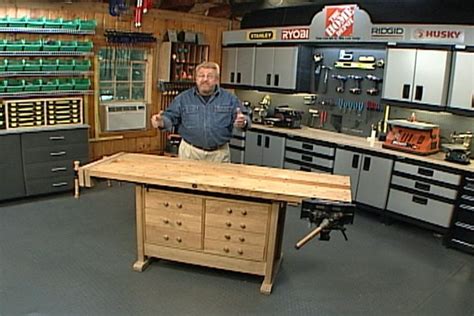Is your garage a cluttered mess? Are you struggling to find tools and create a functional workspace? Look no further! In this blog post, we will discuss the key steps to transform your garage into the ultimate workshop. From analyzing your garage space to choosing the right tools and equipment, we will guide you through the process of creating a functional layout. We will also explore organizing storage solutions for efficiency, setting up a proper lighting system, and establishing a comfortable work area. Additionally, we’ll discuss implementing safety measures and utilizing your workshop for various projects. Get ready to unlock the hidden potential of your garage!
Analyzing your garage space
When it comes to setting up a workshop in your garage, one of the first things you need to do is analyze your available space. Assessing the size, layout, and potential limitations of your garage will help you create an efficient and functional workshop that meets your needs. Whether you have a small or large garage, optimizing the use of space is crucial. By considering the following factors, you can make the most out of your garage and create an organized and productive workshop.
1. Measurements: Start by measuring the dimensions of your garage. This includes the length, width, and height of the space. Knowing the exact measurements will help you determine where you can place workbenches, tool cabinets, and other equipment. Additionally, measuring the height of your garage will allow you to plan for proper lighting and ensure that overhead storage solutions will fit comfortably.
2. Layout and Traffic Flow: Consider the layout of your garage and how you envision the workflow in your workshop. Think about how you will move around the space and access different areas. It’s important to have a clear pathway to avoid any obstructions and allow for easy movement. Keep in mind that certain tools and equipment may require additional floor space for operation, so plan accordingly.
3. Potential Restrictions: Take note of any potential restrictions or limitations in your garage space. This could include obstacles such as support columns, water heaters, or HVAC systems. These elements may impact the placement of your workstations or require you to work around them. By identifying these restrictions early on, you can adjust your workshop layout accordingly and optimize your available space.
By carefully analyzing your garage space and considering factors such as measurements, layout, traffic flow, and potential restrictions, you can create a well-organized and efficient workshop. Taking the time to plan and optimize your space will not only make your work easier but also enhance your overall workshop experience.
Choosing the right tools and equipment
Choosing the right tools and equipment is essential for any workshop or garage space. The type of tools you have can greatly impact the efficiency and quality of your work. Whether you are a DIY enthusiast or a professional, having the right tools can make a world of difference in your projects.
When it comes to choosing tools, it is important to consider the specific needs of your projects. Start by making a list of the tasks you frequently perform in your workshop. This will help you determine the essential tools that you need to have. For example, if you often work with wood, a good set of chisels, saws, and sanders would be necessary. On the other hand, if you are more into electronics, you may need a soldering iron, multimeter, and wire cutters. It is important to have a clear understanding of what tools you will actually use on a regular basis.
Once you have identified the necessary tools, it is time to research and compare different brands and models. Quality is crucial when it comes to tools and equipment. Investing in high-quality tools might be more expensive upfront, but they will generally last longer and provide better performance. Read reviews, ask for recommendations from fellow enthusiasts or professionals, and look for trusted brands with a good reputation. Additionally, consider the warranties offered by manufacturers, as this can be an indicator of their confidence in their own products.
In addition to tools, selecting the right equipment is also important. Depending on your projects, you may need items such as a workbench, power tools, storage cabinets, or specialized machinery. Consider the size and capabilities of your workshop space when choosing equipment. It is essential to have a functional layout that allows you to move around easily and access your tools and equipment without any hindrance. Organization is key, and utilizing storage solutions such as shelves, pegboards, or cabinets can help keep your workspace tidy and efficient.
- Make a list of the tasks you frequently perform in your workshop.
- Research and compare different brands and models.
- Consider the size and capabilities of your workshop space when choosing equipment.
- Utilize storage solutions to keep your workspace tidy and efficient.
A proper lighting system is also essential for any workshop. Adequate lighting will ensure that you can see what you’re working on and prevent accidents. Consider installing overhead lights as well as task lighting for specific areas. Natural light is also beneficial, so if possible, make use of windows or skylights in your workshop. Don’t forget to set up a comfortable work area as well. A quality workbench and ergonomic seating will reduce strain on your body and make it easier to focus on your projects.
| Benefits of Choosing the Right Tools and Equipment: |
|---|
| Improved Efficiency: Using the right tools for the job can streamline your workflow and make tasks faster and easier to complete. |
| Enhanced Workmanship: Quality tools and equipment can help you achieve more precise and professional results in your projects. |
| Increased Safety: Having the appropriate tools for the task at hand reduces the risk of accidents. Safety should always be a top priority in any workshop. |
| Long-Term Cost Savings: Investing in high-quality tools may seem expensive initially, but they tend to last longer, perform better, and ultimately save you money in the long run. |
Creating a functional layout
A functional layout is crucial for any workshop or garage. It ensures that your workspace is well-organized and efficient, allowing you to maximize productivity and make the most of your available space. Whether you’re a professional tradesperson or a dedicated DIY enthusiast, having a well-thought-out layout can make all the difference in the world. In this blog post, we will explore some key considerations for creating a functional layout in your workshop or garage.
One of the first things you’ll want to consider when creating a functional layout is the flow of your workspace. Think about how you move around in your workshop and the tasks you typically perform. Are there any areas that frequently become cluttered or congested? Identifying these bottlenecks will help you determine where to place your most frequently used tools and equipment for easy access.
Another important aspect of a functional layout is the organization of your storage solutions. Utilizing shelves, cabinets, and pegboards can help keep your tools and supplies neatly arranged and easily accessible. Consider categorizing your items and using labeled bins or drawers to further enhance organization and ensure that everything has its designated place.
In addition to storage, having a designated workbench or work surface is essential for a functional layout. This area should be spacious enough to accommodate your projects but not so large that it takes up unnecessary space. It’s also a good idea to have proper lighting above your workbench to ensure that you have adequate visibility while working on intricate tasks.
- Ensure proper lighting above your workbench
- Designate storage solutions for tools and supplies
- Organize items using labeled bins or drawers
- Create a spacious but efficient workbench or work surface
| Advantages of a Functional Layout | Disadvantages of a Poor Layout |
|---|---|
|
|
By creating a functional layout in your workshop or garage, you can greatly enhance your overall workspace experience. It allows you to work more efficiently, find tools and supplies easily, and promotes a safer work environment. So, take the time to analyze your space, choose the right tools and equipment, and design a layout that suits your specific needs. Your future projects will thank you for it!
Organizing storage solutions for efficiency
When it comes to organizing storage solutions for efficiency in your workshop, there are several factors to consider. Having a well-organized storage system not only improves productivity but also helps to maintain a clean and clutter-free workspace. In this blog post, we will discuss some effective ways to optimize your storage space and keep everything in its rightful place.
List of storage solutions:
- Wall-mounted cabinets
- Pegboards
- Stackable bins and containers
- Shelving units
- Tool racks and holders
Wall-mounted cabinets are an excellent storage solution as they maximize vertical space while keeping your tools and equipment easily accessible. You can categorize the items and use labeled bins or containers to store smaller items such as screws, nails, and other hardware. This ensures that everything has a designated spot, making it convenient to find and return items to their proper place.
A pegboard is another popular option for organizing tools. By hanging your frequently used tools on hooks, you can save valuable drawer or shelf space. Plus, the visual display makes it effortless to locate the tool you need at a glance. You can even outline the tool shapes on the pegboard to ensure they are always returned to their designated spots.
Table of storage solutions:
| Storage Solution | Advantages |
|---|---|
| Wall-mounted cabinets | Maximizes vertical space, easy access |
| Pegboards | Saves space, visually accessible |
| Stackable bins and containers | Efficient for storing smaller items, easy categorization |
| Shelving units | Utilizes floor space, adjustable shelves |
| Tool racks and holders | Keeps tools organized, space-saving |
Utilizing shelving units allows you to store larger items or boxes while utilizing the available floor space. Adjustable shelves are particularly useful as they can accommodate different sizes of tools or equipment. Additionally, tool racks and holders can be mounted on walls or hung on pegboards, keeping your frequently used tools within reach and well-organized.
By implementing these storage solutions in your workshop, you can enhance efficiency and save valuable time searching for tools or materials. Remember to regularly declutter and reorganize your storage system to ensure everything remains in order. With an organized and efficient workshop, you’ll be able to focus on what’s important – your projects!
Setting up a proper lighting system
When it comes to setting up a proper lighting system in your workshop, it is essential to consider both functionality and efficiency. Having adequate lighting not only improves visibility but also enhances safety and productivity. This article will guide you through the key aspects to consider when setting up your workshop lighting system.
Firstly, it is important to choose the right type of lighting for your workshop. LED lights are highly recommended due to their energy efficiency and longevity. They provide bright, uniform lighting that is suitable for various tasks. Additionally, LEDs produce minimal heat, reducing the risk of fire hazards in your workshop. Consider installing overhead LED lights or LED light fixtures that can be easily mounted to the walls or ceiling.
Next, you should plan the placement of your lights strategically. Determine the areas in your workshop that require the most lighting, such as the workbench, machinery, or assembly areas. Install additional lighting fixtures in these high-activity zones to ensure optimal visibility. Use pendant lights, task lights, or adjustable spotlights to focus light on specific areas where detailed work is performed.
- Key considerations when setting up your workshop lighting system:
- Choose LED lights for energy efficiency and longevity
- Strategically place lights in high-activity zones
- Consider task lighting for detailed work areas
- Utilize natural light sources when possible
- Install proper light controls for adjustable lighting levels
In addition to artificial lighting, try to utilize natural light sources if available in your workshop. Natural light not only saves energy but also provides a more pleasant working environment. Consider installing windows, skylights, or translucent roofing panels to introduce natural light into your workshop. This can help reduce eye strain and create a more comfortable space to work in.
| Advantages of proper workshop lighting: | Disadvantages of poor lighting: |
|---|---|
| Improved visibility and accuracy | Increased risk of accidents and errors |
| Enhanced safety and reduced hazards | Eye strain and fatigue |
| Boosted productivity and efficiency | Poor quality work and decreased productivity |
Lastly, don’t forget to install proper light controls in your workshop. Having the ability to adjust the lighting levels will allow you to customize the brightness based on specific tasks or personal preferences. Dimmer switches, occupancy sensors, or smart lighting systems can be installed to provide convenient control over your workshop lighting.
In conclusion, setting up a proper lighting system in your workshop is crucial for creating a functional and safe working environment. Choose energy-efficient LED lights, strategically place them in high-activity zones, and consider incorporating natural light sources if possible. Remember to install proper light controls for adjustable lighting levels. By investing in a well-designed lighting system, you can enhance visibility, productivity, and overall efficiency in your workshop.
Establishing a comfortable work area
Establishing a comfortable work area is crucial for any workshop. Whether you use your workshop for woodworking, automotive repairs, or other projects, having a space that is ergonomic and conducive to productivity is essential.
There are several key elements to consider when setting up a comfortable work area. First and foremost, you’ll want to ensure that you have a sturdy and spacious workbench. This will provide you with ample room to complete your projects and give you a solid surface to work on. Additionally, consider investing in an adjustable workbench that can be tailored to your height and preferred working position.
Another important factor in creating a comfortable work area is having the right seating. If you spend long hours in your workshop, a comfortable and supportive chair is a must. Look for a chair that offers good lumbar support and adjustable features such as the height and tilt.
- Invest in proper lighting
- Choose a suitable flooring option
- Organize your tools and materials efficiently
- Consider noise reduction measures
- Keep your work area clean and clutter-free
Having proper lighting is essential to avoid eye strain and ensure that you can see your projects clearly. Consider installing overhead lighting as well as task lighting, such as adjustable desk lamps, to provide adequate illumination in specific areas.
When it comes to the flooring in your workshop, opt for a durable and easy-to-clean surface. Concrete, epoxy, or rubber flooring are popular choices that can withstand heavy use and are resistant to spills and stains.
In order to establish a comfortable work area, it’s important to organize your tools and materials efficiently. Use storage solutions such as shelving, pegboards, and tool chests to keep your workspace tidy and easily accessible. By having a designated place for each item, you can save time and minimize frustration.
| Tool Type | Recommended Storage Solution |
|---|---|
| Hand Tools (screwdrivers, wrenches, etc.) | Pegboard with hooks |
| Power Tools (drills, saws, etc.) | Tool chest or cabinet |
| Small Parts and Hardware | Transparent storage bins or drawers |
Noise can be a significant factor in creating a comfortable work area. Consider using soundproofing materials on the walls or installing noise-canceling headphones to reduce the impact of loud machinery or tools.
Finally, maintaining a clean and clutter-free work area is essential for both efficiency and safety. Regularly clean up after each project and ensure that everything is properly stored away. This will not only make your workspace more inviting but also help you locate tools and materials more easily.
Implementing safety measures in your workshop
Implementing safety measures in your workshop is crucial to ensure the well-being of yourself and others who use the space. It is important to create a safe environment that minimizes the risk of accidents and injuries. By following a few key guidelines and incorporating safety measures into your workshop, you can greatly reduce the chances of accidents occurring.
One of the first steps in implementing safety measures in your workshop is to **wear appropriate protective gear**. This includes safety goggles, gloves, ear protection, and sturdy footwear. These items provide an extra layer of protection and can significantly reduce the risk of injury from flying debris, loud noises, and harmful materials.
Next, it is important to **organize your tools and equipment** in a way that promotes safety. Keep your work area clean and free of clutter to prevent tripping hazards. Use tool racks, pegboards, and cabinets to store your tools properly and prevent them from falling or causing accidents. Keeping your workspace tidy not only enhances safety but also improves productivity and efficiency.
- Label hazardous materials: Properly label and store any hazardous materials or chemicals in your workshop. Make sure they are kept in well-ventilated areas and away from heat sources. Educate yourself on the correct handling and disposal procedures for these materials to prevent accidents or environmental harm.
- Maintain your equipment: Regularly inspect and maintain your tools and equipment to ensure they are in good working condition. Replace any damaged or worn-out parts to prevent malfunctions that could lead to accidents. Additionally, follow the manufacturer’s instructions for maintenance and usage to maximize safety.
- Have a fire safety plan: Install fire extinguishers in easily accessible locations within your workshop. Familiarize yourself with their proper use and conduct regular checks to ensure they are in working order. It is also a good idea to have a first aid kit nearby that is stocked with essential supplies in case of any injuries.
In addition to these safety measures, it is important to **educate yourself** on safe work practices and techniques. Stay updated with the latest safety standards and regulations in your industry. Attend workshops or training sessions on safety to enhance your knowledge and skills. Being aware of potential hazards and implementing the necessary precautions can prevent accidents and create a safer workshop environment.
| Safety Measure | Importance |
|---|---|
| Wearing protective gear | Essential to safeguard against various hazards |
| Organizing tools and equipment | Reduces the risk of accidents and improves efficiency |
| Labeling hazardous materials | Prevents mishandling and potential harm |
| Maintaining equipment | Ensures safe and reliable operation |
| Having a fire safety plan | Prepares for emergencies and minimizes damage |
By implementing these safety measures in your workshop, you are taking proactive steps to protect yourself and others. Prioritizing safety not only reduces the risk of accidents and injuries but also promotes a more productive and comfortable work environment. Remember, safety should always be the top priority in any workshop setting.
Utilizing your workshop for various projects
When it comes to utilizing your workshop for various projects, the possibilities are endless. Having a dedicated workshop space gives you the freedom to explore your creativity and tackle different DIY projects. Whether you’re a hobbyist or a professional, having a well-equipped workshop can make a significant difference in the quality and efficiency of your work. In this blog post, we will explore different ways to make the most out of your workshop for a wide range of projects.
One of the key aspects of utilizing your workshop effectively is having the right tools and equipment. Every project requires specific tools, so it’s essential to have a well-curated collection that meets your needs. Invest in high-quality tools that are versatile and durable. Power tools such as drills, saws, and sanders are indispensable for many projects. Additionally, having a good selection of hand tools, like screwdrivers, wrenches, and pliers, is crucial for precise and delicate work.
Creating a functional layout in your workshop is another important factor in utilizing the space efficiently. Consider the workflow and certain projects’ requirements when organizing your tools and workbench. Arrange your tools and equipment in a way that is easily accessible and promotes a smooth workflow. Having a dedicated storage system for different tools and materials will help keep your workshop organized and save you time searching for items.
- Store frequently used tools within reach of your workbench
- Group similar tools and accessories together for easy access
- Label storage containers and shelves for quick identification
- Keep the floor clear to avoid any accidents or tripping hazards
In addition to efficient organization, a proper lighting system is crucial for a well-utilized workshop. Good lighting not only enhances visibility but is also essential for accuracy and safety during intricate projects. Consider a combination of natural daylight and task lighting to ensure a well-lit workspace. Install overhead lighting fixtures and adjustable task lights near your workbench and other dedicated areas to eliminate shadows and provide adequate illumination.
| Workshop Lighting Tips | |
|---|---|
| Maximize natural light with windows or skylights | Use LED bulbs for energy efficiency and brighter illumination |
| Position task lights to eliminate glare and shadows | Consider adding a magnifying lamp for detail-oriented work |
| Ensure proper overhead lighting for overall visibility | Use adjustable lighting options for flexibility |
Another important aspect of utilizing your workshop effectively is setting up a comfortable work area. Consider the ergonomics of your workspace by choosing the right workbench height, adjustable chairs, and ergonomic tools. A comfortable work area will prevent unnecessary strain and allow you to work for extended periods without fatigue. Don’t forget to have proper ventilation in your workshop to maintain good air quality and protect yourself from dust and fumes produced during various projects.
Finally, implementing safety measures in your workshop is of utmost importance. Whether you’re working with power tools, sharp objects, or hazardous materials, taking precautions will safeguard your well-being. Use appropriate safety equipment such as goggles, gloves, and ear protection when necessary. Keep a well-stocked first aid kit on hand and familiarize yourself with emergency procedures. Regularly inspect and maintain your tools and equipment for optimal performance and to prevent accidents.
Frequently Asked Questions
1. How can I maximize space in my garage?
You can maximize space in your garage by organizing and decluttering, utilizing vertical storage solutions, and creating functional layouts to optimize the available space.
2. What tools and equipment do I need for a well-equipped garage?
A well-equipped garage should have a basic set of hand tools, power tools such as a drill and a saw, measuring and marking tools, safety equipment, and storage solutions for organizing and storing tools.
3. How do I create a functional layout in my garage?
To create a functional layout in your garage, consider the flow of work, designate specific areas for different tasks, and arrange your tools and equipment in a logical and accessible manner.
4. What are some storage solutions for organizing my garage efficiently?
Some storage solutions for organizing your garage efficiently include pegboards, wall-mounted shelves, hooks, bins, and cabinets to keep tools, equipment, and other items neatly stored and easily accessible.
5. How do I set up a proper lighting system in my garage?
To set up a proper lighting system in your garage, consider installing overhead fluorescent lights or LED fixtures, supplementing with task lighting for specific work areas, and ensuring sufficient illumination to prevent shadows.
6. How can I create a comfortable work area in my garage?
To create a comfortable work area in your garage, invest in a sturdy workbench with ample workspace, a comfortable chair or stool, and adequate ventilation and climate control to ensure a pleasant and ergonomic environment.
7. What safety measures should I implement in my workshop?
In your workshop, it is important to implement safety measures such as wearing appropriate protective gear, keeping emergency exits clear, using proper tools and equipment, following instructions and guidelines, and maintaining a clean and organized workspace.





